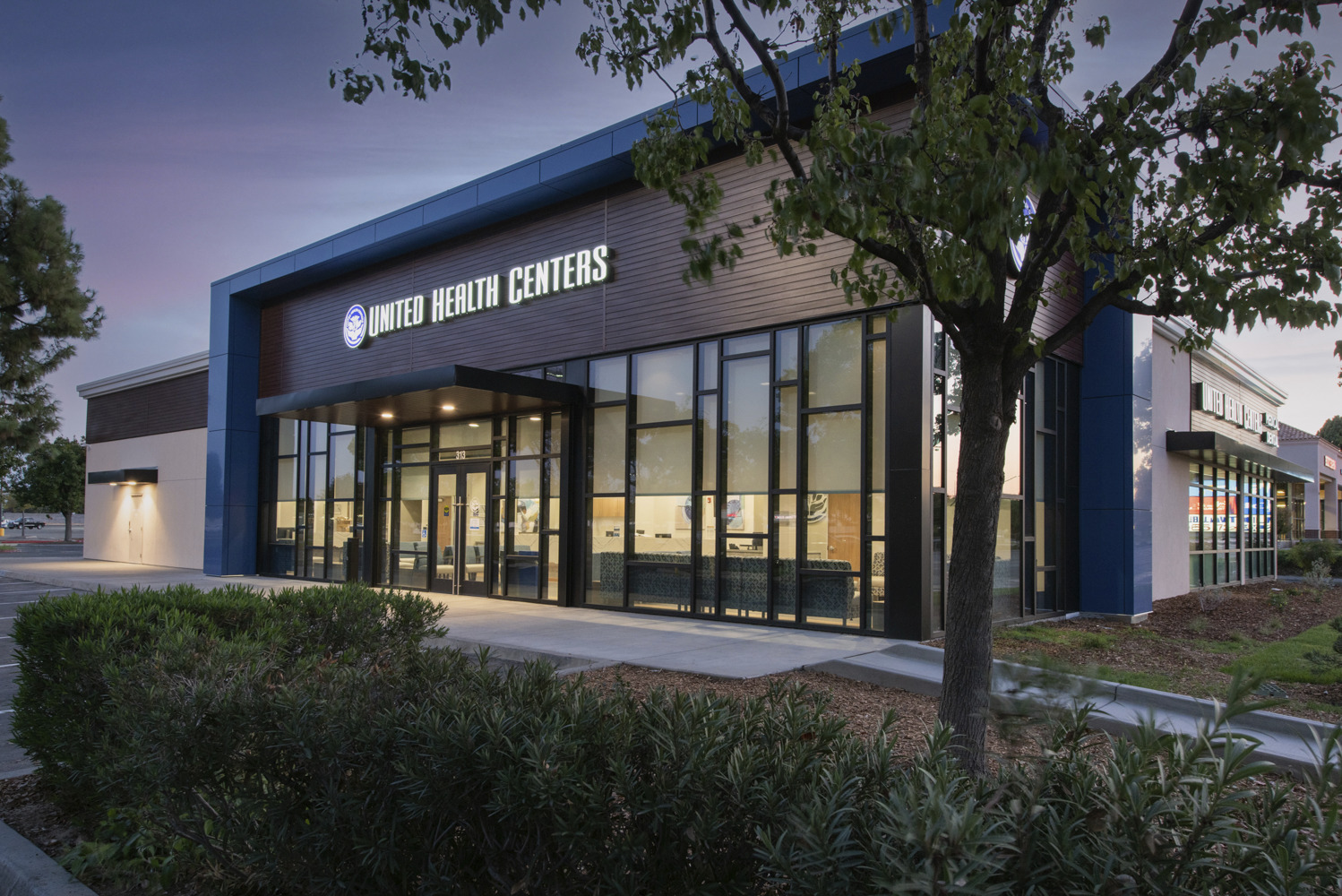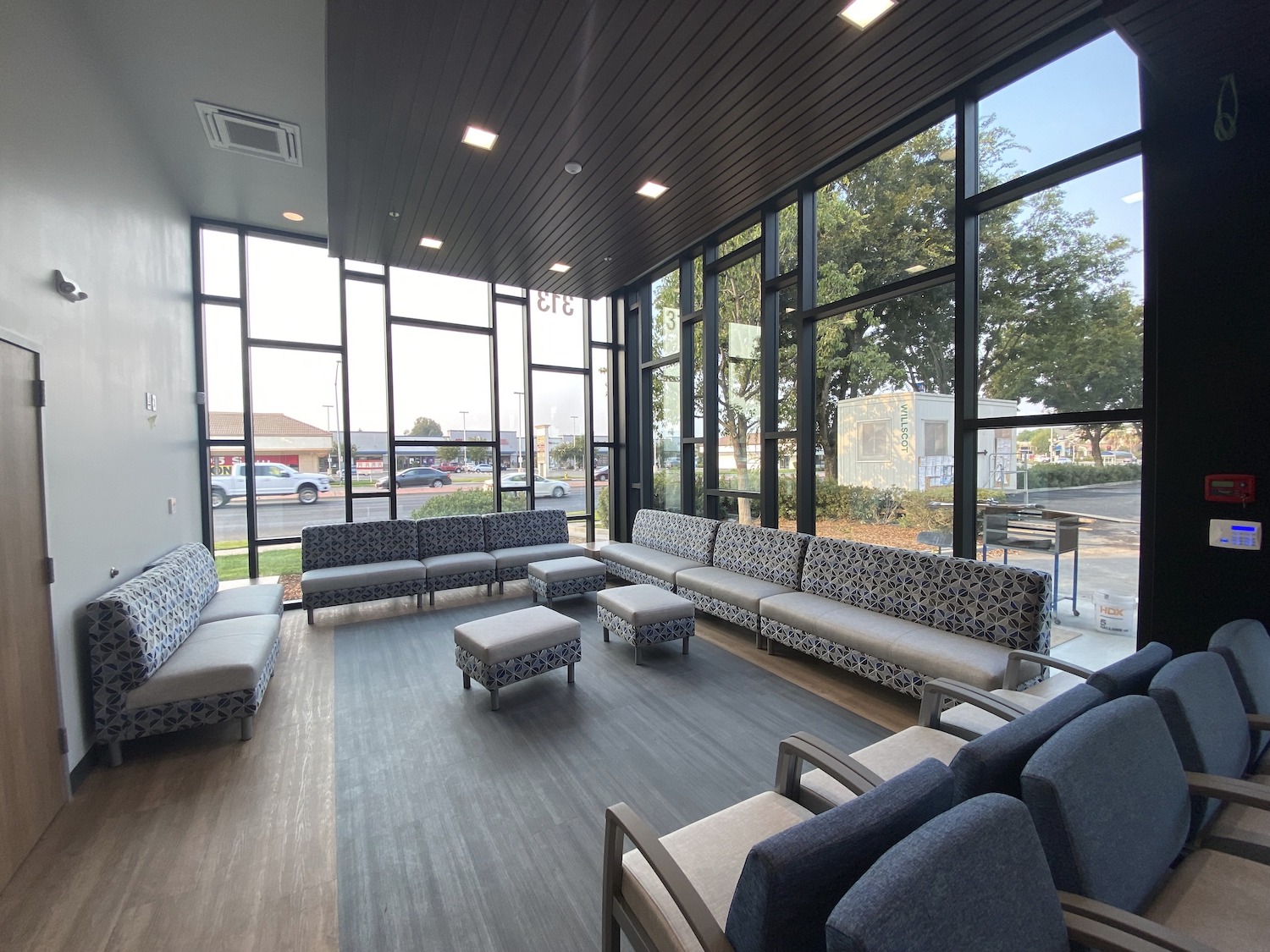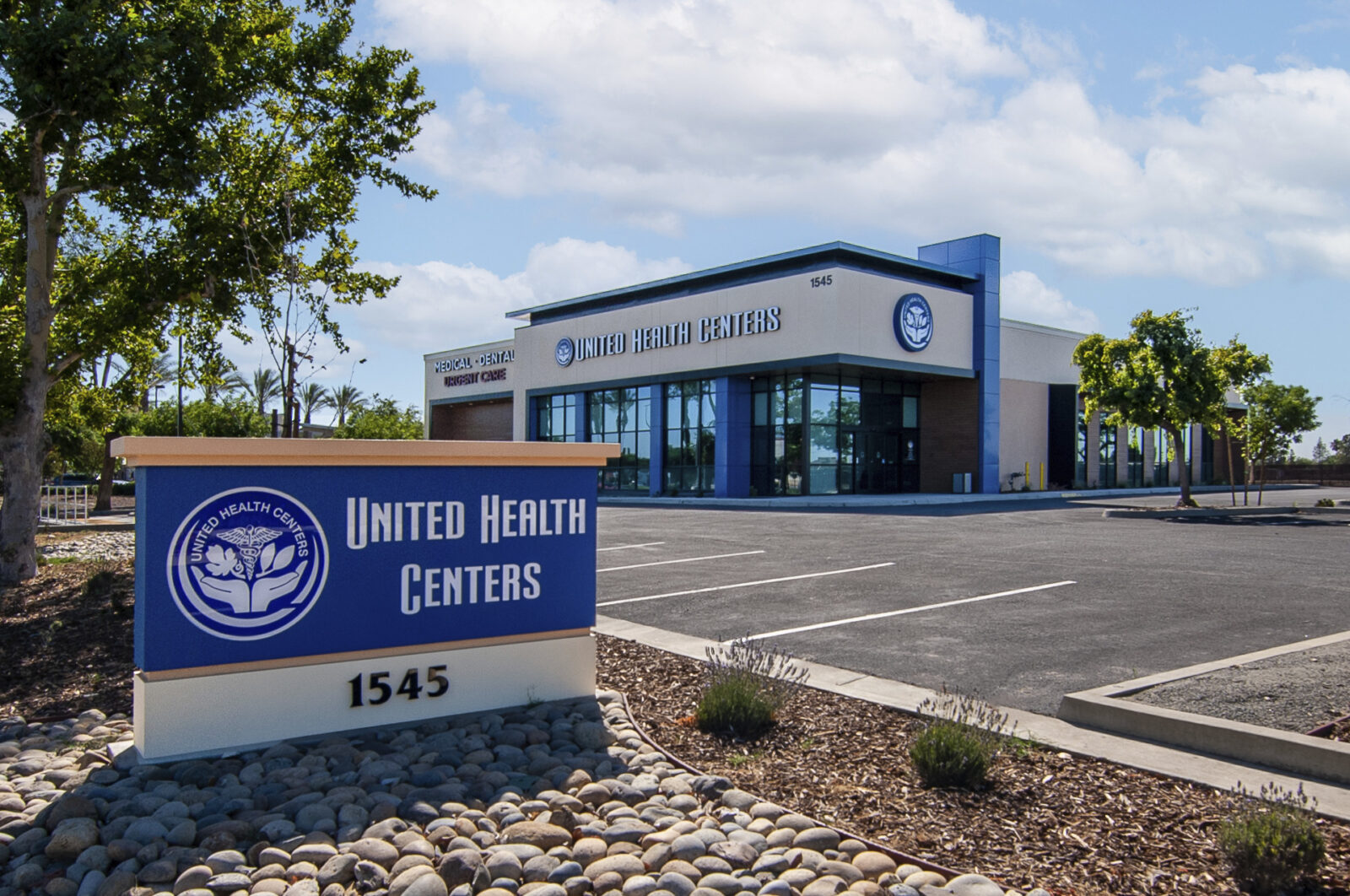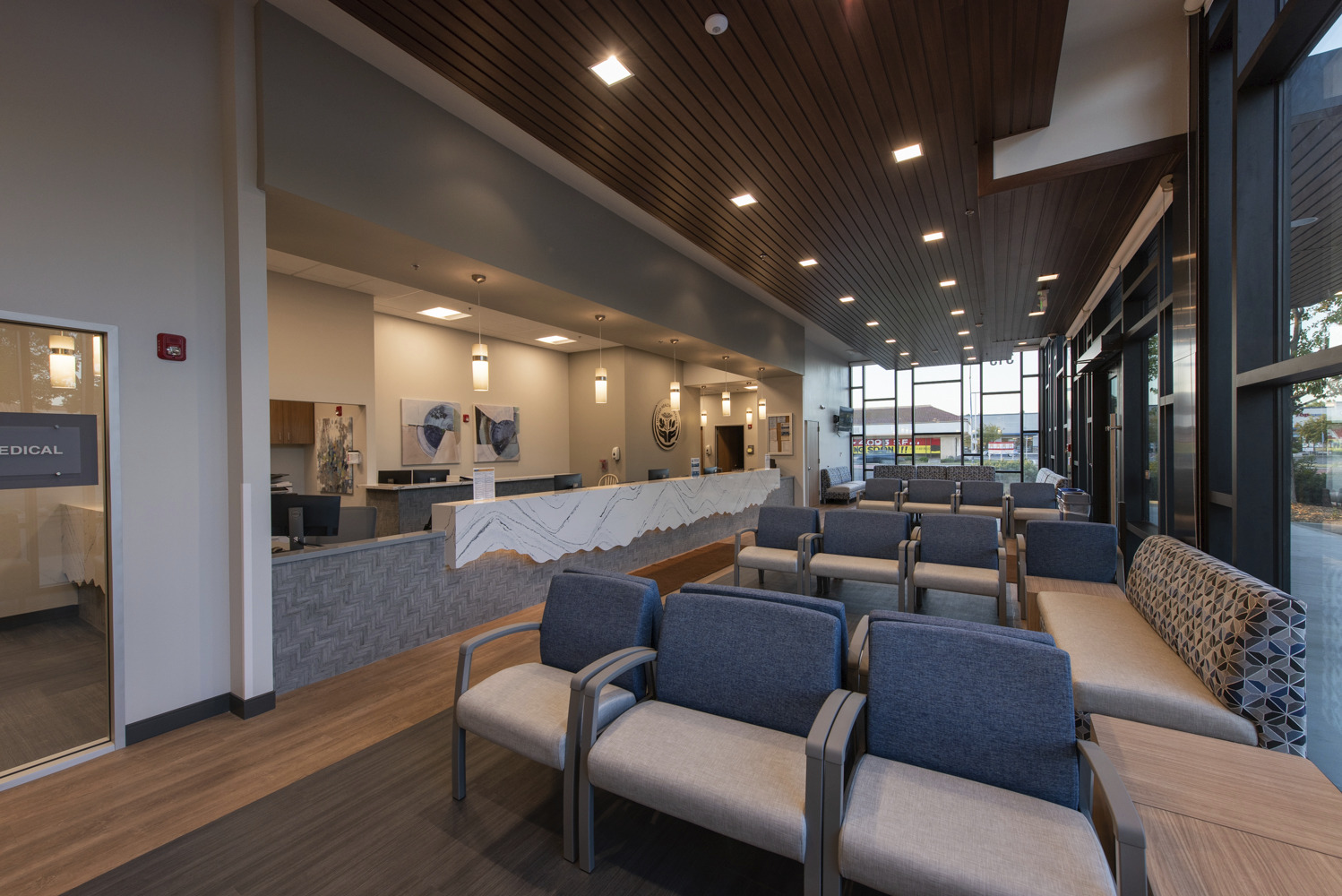社区环境
United Health Centers


Adaptive reuse medical facilities for the post-COVID era
United Health Centers—or UHC—is driven by its commitment to the lifetime wellness of its communities. They provide accessible, comprehensive, quality health care to everyone with compassion and respect, regardless of ability to pay.
As the organization rapidly expands its services across California’s San Joaquin Valley, they’ve collaborated with designers at MG2 to repurpose and transform existing structures into exceptional medical facilities. The resulting spaces provide an elevated user experience by combining contemporary hospitality, residential comforts, and modern medicine in casual, comfortable, and open environments.

Adaptive reuse for healthcare environments
The adaptive reuse of properties into high-performing medical centers requires more than just basic architectural design. In addition to a deep understanding of structural nuances and how to work with existing components to transform a space, specific sets of expertise are required to adhere to state and national medical office codes and regulations.
The team began with intensive programming sessions—key in the concepting of any medical buildings—to unearth fundamental health and comfort considerations, allowing them to optimize the facilities’ user experiences for both patients and staff.

At the Clovis-Shaw Health Center—formerly housing a furniture store, Hollywood Video, and dojo—designers salvaged the building’s shell, reskinning and structurally retrofitting glass windows with the help of strongbacks to allow natural light to flow. Working closely with the city on the exterior, the team removed dated stucco, repainted, and refinished the facade with sun-resistant faux wood and a modern canopy, creating a welcoming atmosphere that begins when one enters the parking lot.
Previously a Sears automotive store, the Hanford Health Center location necessitated the removal of several oil pumps from the site, refilling and reconditioning the foundation to accommodate extensive structural edits, and shoring up. Auto garage doors were also removed and replaced with expansive glass windows that opened up interiors to natural beauty beyond.
Now a modern dental facility, the healthcare architectural design program was compact and complex, requiring the retrofit of fifteen medical stations and its unique plumbing system inside. MG2’s optimized design enabled the desired number of patient alcoves—complete with panoramic views of greenery to help lower patient stress—and a glass-bound reception area with columns buried into the window structure to carry the weight of the modern wall additions.




Designing a COVID-Era Medical Waiting Room
With the goal of elevating a unique end product that steered away from a cookie-cutter feel, designers leveraged focal points of safety, control, and family to produce open, welcoming, and modern environments that embody natural daylight and incorporate hospitality elements throughout.
With COVID still very much a reality, medical facility patients—whether consciously or subconsciously—will gravitate toward spacing themselves out from one another. With this in mind, designers worked to ultimately optimize the waiting room’s layout, configuring the lobby’s flow into unique pockets and pods instead of one large open-format staging area. These zones, designed to take into account individual comfort levels, enable each guest to feel safe while allowing nurses to see everyone seated in the room.

Designing for Medical Employee Health and Wellness
Just as important as patient health, safety, and comfort are that of doctors, nurses, and facilities staff. Employee satisfaction in a time of burnout and record resignations was a primary consideration in these medical office developments. As such, each back-of-house environment is designed and finished with the same high-end materials, finishes, and fixtures as the front-of-house.
Further, outdoor break spaces at facilities were strategically implemented to give healthcare workers room to breathe, a break from their PPE gear, and access to greenery and fresh air during their shifts.

Weaving Sustainability into Healthcare Environments
Above-and-beyond sustainability standards and biophilic elements have been implemented throughout the design and construction of United Health Center’s adaptive reuse medical centers for today’s patients and future generations alike.
Expertise in designing for California’s OSHPD #3 medical code, as well as CalGreen permitting, enabled MG2’s design team to adopt and abide by these clinical and state-wide standards quickly and efficiently. Energy conservation is furthered through solar panel-ready roofs, a robust, eco-friendly lighting system, and the inherent nature of adaptive reuse in favor of new construction, all of which add up to saving UHC energy and money.

-
项目细节
- San Joaquin Valley, CA
- Legacy
- 办公室, 零售开发
- 16,380 SF
- 建筑设计
- Legacy Construction & Real Estate - Photography
- CalGreen, OSHPD #3, LEED